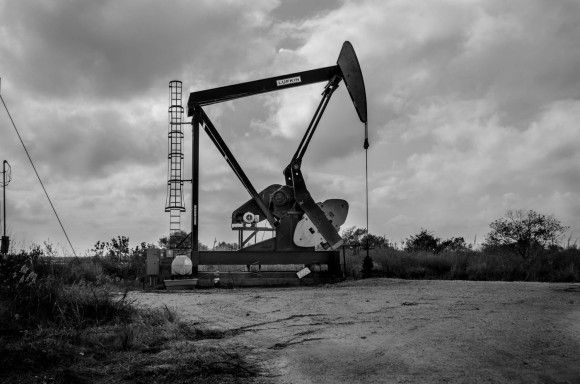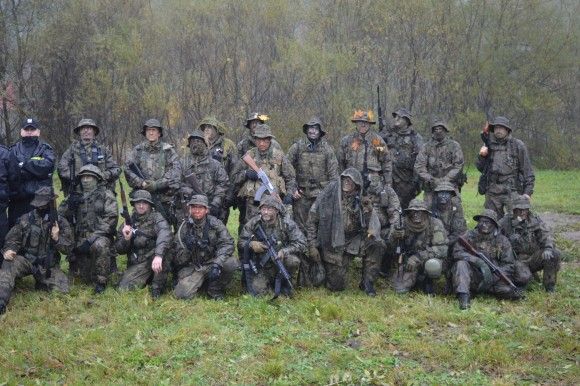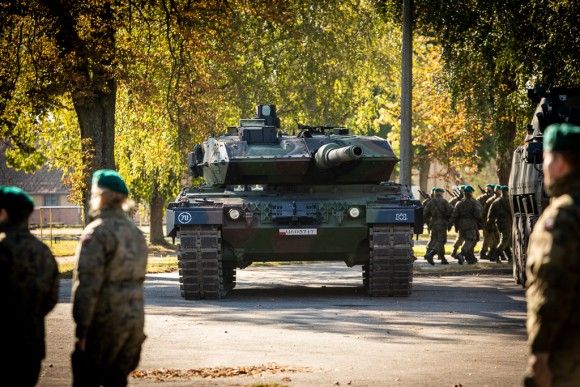Industry
Systems for the Mine-Hunting Vessels - Domain Of The Polish Industry and Research Institutes.
Since several years, Polish research institutes and companies operating in Pomerania, including the Oksywie-based Polish Naval Academy, and OBR CTM S.A (Research and Development Center - Center for Maritime Technology), along with the Gdansk University of Technology, altogether design, manufacture, implement and maintain specialized, track-proven ship systems, for the purpose of being used mainly in case of the mine countermeasure vessels of the Polish Navy - as Hubert Jando, working at the OBR CTM S.A centre claims.
The genesis of that process dates back to the activities undertaken by the Polish Navy’s Research Centre (Ośrodek Badawczy Marynarki Wojennej - OBMW), still continued in the Oksywie district by the Polish Naval Academy, OBR CTM S.A. and by the Gdansk University of Technology. The main thematic scope of the works undertaken at the OBMW centre initially, then within the structure of the Polish Navy’s Higher School (WSMW - Wyższa Szkoła Marynarki Wojennej) covered the ships’ physical fields and the underwater weapons systems. The former domain included the works related to the cognitive research pertaining to the vessel physical fields and application of the research results in the design processes pertaining to the naval armament. In the latter domain, the research was focused on development of the mechanical and electromagnetic minesweeps.
As the developments in the field of electronics, signal processing methods, research methodologies concerning the vessel physical fields and related measuring equipment progressed, ambitious research and development initiatives were undertaken, within the scope of analysing the physical fields and in the area of passive defence systems for the vessels (the research covered the magnetic fields and degaussing technology, hydroacoustics, shock resistance, electric fields, corrosion resistance, heat and radar signatures) and underwater weaponry systems (naval mines, mine countermeasures, sonars etc.). Considering the need of perfecting both the Naval command systems, as well as the problems related to automation of those systems, the CTM centre undertook works directed towards development of techniques and technologies in the field of gathering, distribution, visualizing and archiving of the information processed by the aforementioned suites.
On 5th April 2016, 70th Anniversary of establishing the 13th Fleet Admiral Andrzej Karweta Minesweeper Squadron took place. This is a perfect occasion to emphasize the role played by the Polish Naval Academy, Centre for Maritime Technology and by the Gdansk University of Technology, equipping the vessels of the squadrons with newly developed systems and devices. At the moment, the unit uses vessels of two classes: basic minesweepers (single 207 DM [Gopło-class] minesweeper - ORP “Gopło”, and four 207 M [Mamry-class] minesweepers: ORP “Mamry”, ORP “Śniardwy”, ORP “Wigry” and ORP “Wdzydze”), along with minehunters, coming in a form of modified and modernized 206 F design minesweepers, namely ORP “Czajka”, ORP “Flaming” and ORP “Mewa”.
The systems mounted onboard the above-listed vessels, in most cases, are a result of long-term collaboration undertaken by the above-listed research centers and enterprises. CTM is one of the entities which have been operating for more than 30 years now, designing, implementing and delivering its own solutions to the vessels of the above classes, above all within the scope of passive defence, underwater weapons systems and command and battle management suites.
The research and development activities pursued by CTM in the field of passive countermeasures date back to the times of the OBMW-undertaken initiatives, and later initiatives pursued by the Higher School of Polish Navy – Physical Fields Department at the Institute of Electronics and Electronic Technology and at the Institute of Underwater Weaponry. 207 design minesweepers with weak magnetic fields of the hulls led to a radical decrease of the hull magnetic fields, within the scope of permanent and induced magnetization. However, the construction works exposed a new set of problems related to emergence of dispersed magnetic and electromagnetic fields. The above phenomenon determined a need to develop a new set of solutions within the scope of degaussing. This led to initiation of research on minimizing the diffused magnetic field signatures, and to design of measurement and control systems that could be used to gather the data on the tested magnetic fields. The experts, working at the Centre for Maritime Technology, delivered a variety of patented original methods and countermeasures, used to minimize the aforementioned fields. Among those solutions, one should include the methods for shaping the permanent magnetism of the vessel mechanisms, a system of local compensation coils for the ship systems and magnetic fields for the devices running on direct and alternating current.
If one followed the chronology of the most important works that were realized by the Gdynia-based Centre, within the field of degaussing and the magnetic fields, applied in case of the 206F, 207 and 206 FM design vessels, “Świergotek” project needs to be mentioned first. Within the framework of the said initiative, a degaussing method, along with a method for shaping the magnetic fields of the vessels were developed, including the methodology used in case of the 206F and 207 design minesweepers. Another project, also known as “Pieżga”, was to create a design and construct machines and electric devices with minimized external diffusion fields. This type of systems was fitted onto the 207 design minesweepers. In the subsequent years, conceptual projects, initial projects and technological designs for degaussing systems and coil compensation of the vessel systems for the low-magnetic minesweepers and mine-hunters.
Considering the ongoing and prospective needs of the Polish Navy within the scope of designing new passive defence systems for the ships and new underwater weapons systems, Centre for Maritime Technology, in the period between 1986 and 1991, established a number of PCA-certified laboratories. These laboratories support the development and implementation works for the newly designed and modernized ships, mainly the mine countermeasure ships. The laboratories have also been used to carry out works in the field of degaussing the main propulsion system, generators and cannons of the 207 design ships. It was then, when the optimum coil compensation operation parameters were also defined.
The magnetic processing of the mechanisms, before they were fitted onto the 207 design minesweepers again, ensured proper shape of the permanent magnetic field, and stabilization of that field. Similarly as in case of the magnetic fields of the vessels, also the issues related to minimizing of the hydro-acoustic signatures are dated far back, beyond the existence of the CTM centre. These issues were the main subject of works carried out by the Polish Navy’s Research Centre, in the period during which theoretical and experimental works were prepared, in order to carry out the process of designing minesweeper hulls with low-magnetic field.
Determination of the main underwater noise sources located within the vessel was a result of the undertaken works. Within the scope of the problems related to minimizing the hydro-acoustic signature, in the light of the fact that the Centre for Maritime Technologies realized yet another set of works, so called shock absorbers were developed and implemented. These devices have been diminishing the vibration transferred from the main propulsion system and the generators, compensating the shock load on the vessel systems, caused by underwater explosions. What is even more important, using the shock absorbers for the purpose of complex foundation of the ship’s mechanisms, the shock load on those systems was 20 times lower.
It is also worth to stress the fact that the CTM employees, closely collaborating with the Polish ship industry and scientific institutes, have developed and implemented numerous anti-corrosion cathode-based protection systems, with a function of minimizing the electric signature of the vessel, also in case of the ships used by the 13th Minesweeper Squadron. At the beginning, the systems utilized lead-silver anodes (207 design systems). In the subsequent period, titanium anodes coated with iridium oxide – a technology developed with involvement of the Silesian University of Technology – were being applied in case of the minesweepers, in a form of polarization anodes.
The research initiatives undertaken by the Centre for Maritime Technology in the area of underwater weapons system, finalized with implementation of equipment and armament of the ships, was initiated in mid-1980s. At the time, works were undertaken to develop a new type of minesweeper, also known under the 207 M. designation. The initial 207P original design was modernized, with the Soviet MG-69/89 High frequency, hull mounted, active mine detection sonars being replaced with a domestically manufactured SHL-100 station. The system is a result of collaboration between the Centre for Maritime Technology and the Gdansk University of Technology, undertaken back in 1983. The research and development works lasted since 1992, and two years later the station went through a qualification test programme. Despite the above, it was not included in the inventory of the Polish Navy.
SHL-100M modernized variant has been installed, back in 1995, on the minesweeper with Bort Number 646. Another modernization, implemented in a form of transmission scanning and a new operator’s console, took place between 1995 and 1997. At the moment SHL-100 AM sonar is being used by six Polish Navy vessels. SHL-100AM is a single-frequency resonance sonar, operating within the low frequency range, making it possible to detect bottom and anchored mines, and other underwater objects. For the purpose of receiving and transmitting the acoustic signals, the system utilizes a single transmitting-receiving hydro-acoustic transducer. The tasks realized by the system include detection and classification of mine-resembling underwater objects, archiving and visualization of the gathered data. The sonar may track up to 10 targets simultaneously, in the automatic mode. The varied operational scenarios in case of the mine-hunting operations, and new threats created a need to continuously modernize the sonar systems.
Responding to that requirement, between 2000 and 2006, CTM created a three-frequency broadband SHL-101/T sonar. Its purpose is to detect bottom and anchored mines, including stealth mines. The station is using modern hydro-acoustic transducers manufactured by the French Thales Underwater Systems company. Application of the FM signals made it possible to compress the impulse, which led to a significant increase of the signal to noise ratio, also making it possible to achieve couple of centimetres of in-depth resolution. This feature significantly increased the detection and classification performance pertaining to the stealth mines, within the waters with a high level of noise.
The tasks realized by the SHL-101/T system include mine-detection in shallow and deep waters, with complex layer structures and high level of noise, up to sea state of 4 and ship speed of 6 knots. Modes of operation: LF (long range detection, depth classification), HF (high resolution detection) and VHF (acoustic shadow classification), detection and classification of underwater bottom objects (bottom mines), floating mines, hanged and anchored ones, tracking the underwater objects and archiving and recovering the imagery collected by the sonar. Prototype of the device has been installed on the last 207M minesweeper, ORP “Wdzydze”, back in 2006. Back in December 2006, the initial sea trails took place in the Bay of Gdansk, during which the sonar detected the anchored mines and the bottom mine. Up until today, SHL-101/T station is being used by the ORP “Wdzydze” minesweeper.
Besides the mine detection and classification systems used by the vessels in the squadron’s inventory, CTM also develops mine neutralization devices. These include remotely detonated “Toczek” anti-mine explosives. They use an original method of detonation, which is realized with the use of encoded acoustic signals. “Toczek A” and “Toczek B” explosives are carried by the “Ukwiał” craft (designed by the Gdansk University of Technology) controlled via fibre optics, from the ship-mounted console. “C” variant of the “Toczek” explosive is carried by a diver. It is worth to note the fact that besides the sonars, underwater craft, mine countermeasures used by the mine-countermeasure vessels, still use the minesweeper armament, peculiar of this class of a ship.
These ships use mechanical minesweeps with mechanical and explosive cutters - MT-2W, as well as electromagnetic loop minesweeps - TEM-PE-2MA - which have been developed at the Gdynia-based facility. Moreover, the Squadron ships are tailored for using the “Promienica” acoustic-magnetic inductive minesweep, developed and moved into the production phase by the Centre for Maritime Technology. The minesweep in question acts against the mines with non-contact detonators, reacting to acoustic and magnetic signatures, in shallow seawater, with depths ranging from 5 to 40 meters. The main components of the minesweep include magnetic inductors, acoustic field generator and a control system. The most important feature of the minesweep is visible in the fact that it affects the mine precisely through generation and simulation of physical fields, on the basis of well known and recognized spatial distributions of magnetic fields and amplitude-frequency spectrum of the hydroacoustic signature of a selected vessel.
Within the scope of development of mine armament, the research and development works, and implementation works as well, the result of which is visible in implementation of modernized and brand new systems, and in introduction of those systems into the inventory of the Polish Navy, were being realized initially at the Polish Navy’s Research Centre, and later at the Physical Fields Department at the Institute of Electronics and Electronic Technology and at the Institute of Underwater Weaponry. Then, the above initiatives were taken over by the Polish Naval Academy and Centre for Maritime Technology. MMD-1 (Morska Mina Denna – Naval Bottom Mine) was the first of the undertaken projects. It is the first naval mine designed and manufactured in Poland. The mine is equipped with a three-channel (magnetic, pressure, acoustic) non-contact fuse, with triggering parameters being set with mechanical switches. MMD-2 mine is a refined derivative of the above system, it was also fitted with a non-contact three channel fuse. The mine in question also uses larger quantity of explosive, it has additionally been fitted with a programming device, allowing the user to define the condition under which the detonator is triggered. Both types of mines may be used by 206FM and 207M vessels.
Following the global trends, in order to raise the effectiveness with which the vessels and their systems are used, the experts working at the Centre for Maritime Technologies began to integrate the armament and equipment into a single, coherent, multifunctional naval battle system. Works on the first Polish automated command and control system were initiated at the Centre back in 1991, within the scope of the research and development and implementation works. The qualification tests took place in 1996, while the implementation works lasted until 1999. A year later, CTM began series production of “Pstrokosz” suite, with four examples created and installed onboard the ships belonging to the 13th Minesweeper Squadron.
The basic purpose of the command and underwater weaponry control system is to integrate the ship’s subsystems into a single, coherent vessel command assistance environment. The system consists of a command support system, integrated navigation subsystem, integrated communications subsystem, along with sensors and effectors, including a sonar, underwater craft, minesweeps, and mine neutralization systems. Decision-assistance system is the element which integrates all of the aforementioned suites, along with the subsystems and devices used by the vessel. It is being controlled with multifunctional operator’s consoles, displaying the synthetic visualization of the tactical situation around the vessel, making it possible to properly employ the resources, according to the realized mission and operator’s level of authority. Construction works pertaining to the next generation of the “Bełtwa” system, used to control the underwater weaponry, began at CTM back in 2002.
Two years later, qualification test programme related to the prototype was carried out. Then the system was fitted on the 207 design minehunter. The test lot example was installed on a 206FM design ship in 2006. The system’s purpose is to provide planning support regarding the typical minehunting and mine laying missions, undertaken by the vessel. The suite offers assistance in the decision making processes, regarding the utilization of the armament and devices contained within the equipment set of the ship, during the combat mine hunting and mine laying operations. The main elements of the system include software of the command assistance subsystem, operator’s panel, local area network and network software-hardware interfaces, making it possible to exchange the data between the “Bełtwa” suite and the integrated devices of the ship.
The specialized, dedicated systems for the mine hunting vessels have achieved particular importance, especially for the 13th Minesweeper Squadron of the Polish Navy, after Poland joined NATO. At the time, the Navy was expected to get ready for allied training initiatives, and create detachments consisting of ships that could become a part of the NATO maritime components.
Starting from that moment, the 13th Minesweeper Squadron participated in the following exercises in the Baltic Sea and the North Sea: „SANDY COAST”, „PASSEX”, „BALTOPS”, „BLUE GAME” (MARINER), „STRONG RESOLVE”, „ANGLER", „NORTHERN LIGHT”, „NORTHERN COASTS”, „SQNEX”, „MCOPLAT”, „DANEX”, „JOINT WARRIOR” oraz „OPEN SPIRIT”. Moreover, since 2002, the 206FM project ships have been, nine times, a part of the Standing NATO Mine Counter Measures Group 1, which is the most elite multinational mine counter measures group around the world.
Up until now, collaboration of the Polish industry and research institutes, in the field of development of the armament and mine countermeasures, has been deemed to be successful. And new successes may be expected soon. At the end of 2016 the Polish Navy is expected to receive a modern ORP “Kormoran” minehunter. The vessel will become a part of the 13th Minesweeper Squadron’s organizational structure.
It has been built since September 2013 The Centre developed and implements the Vessel Battle Measures Command and Control System, it also delivers a passive countermeasures system for the ship (minimization of the passive physical fields), along with a number of specialized sensors, including the SHL-100/TM and SHL-300 sonars, and effectors (e.g. “Toczek” mine-neutralizing explosives). What is more, CTM also acts as the integrator of all of the components which form the “battle system” of the said vessel.
Hubert Jando, OBR CTM S.A.






